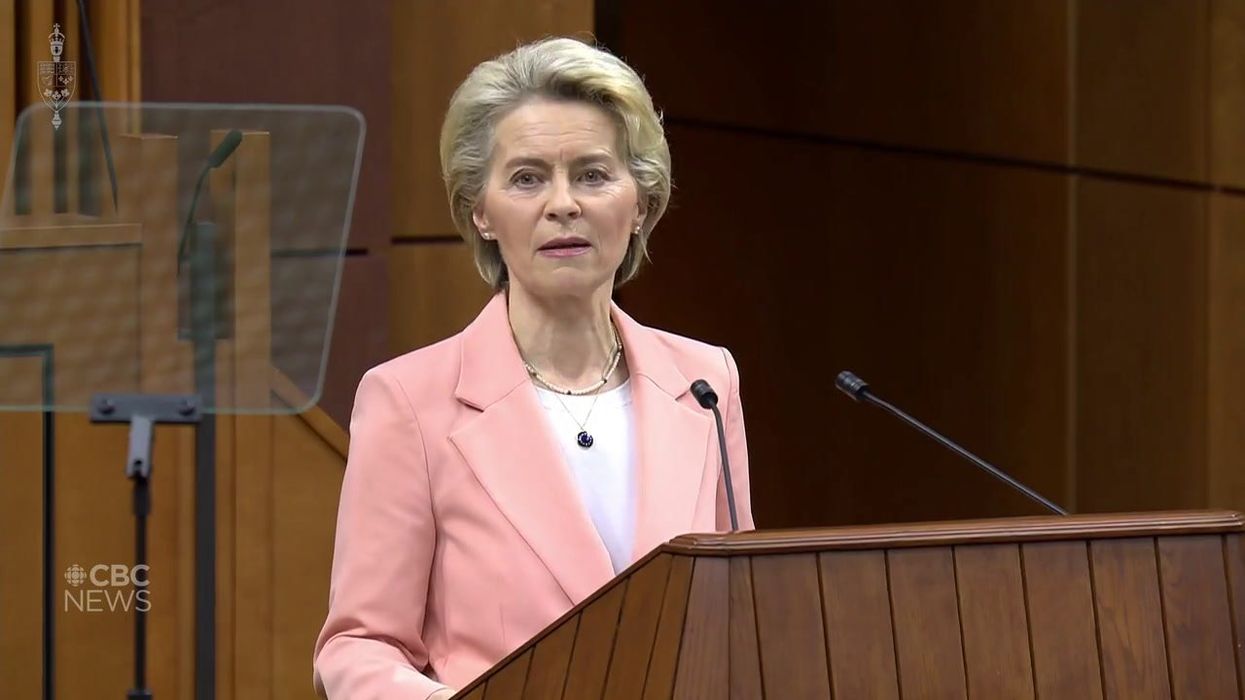Identities
Ariana Baio
Mar 08, 2023
EU leader marks International Women's Day in address to Parliament
content.jwplatform.com
Every year on March 8, businesses and companies flood social media with campaigns celebrating women and girls for International Women’s Day - but last year many were met with a harsh reality when a Twitter bot began calling them out for unequal pay.
In the greatest social media activism call-out of all time, the Twitter account, Gender Pay Gap Bot, would reply to UK organisations who used International Women's Day hashtags with real data showing how fairly that organisation was paying their female employees.
Think you're supporting women and girls? The gender pay gap bot will be the judge of that.
Take Ryanair for example. They tweeted a photo of women within their company last year to celebrate the day.
But shortly after posting, the Gender Pay Gap Bot replied, “In this organisation, women's median hourly pay is 68.6% lower than men's."
Sign up for our free Indy100 weekly newsletter
Ouch.
Throughout the day, companies were outed for not giving equal pay to their female and male employees while trying to participate outwardly.
For some companies, the moment was so embarrassing they deleted their original tweet in honor of International Women’s Day.
“A lot of these companies who will celebrate women and who will claim they are inspired by women on one day of the year, they are not backing up those words with any sort of tangible support,” Francesca Lawson, creator of the Gender Pay Gap Bot said.
And this March 8 is no different as the bot is back in action smashing the patriarchy and bringing to light performative social media activism.
\u201cIn this organisation, women's median hourly pay is 68.6% lower than men's.\u201d— Gender Pay Gap Bot (@Gender Pay Gap Bot) 1646675474
Lawson, 28, knows firsthand that some companies will go to whatever lengths to earn a public gold star without actually putting in the work.
At one point in time, Lawson was working as a copywriter at a company with a 22 per cent median pay gap. When she was asked to write social media posts for International Women's Day, she found it ironic, and frustrating, that many companies, including the one she worked at, were not doing their part for equality.
“I made myself a bit unpopular by pushing back with questions like ‘why are we posting?’ What do we have to say on this issue? What have we actually done to improve women's lives?’" Lawson says.
"I didn't have much success pushing for accountability on the inside, but with the Gender Pay Gap Bot, I found a way to push for accountability on the outside instead."
The idea for the Twitter account came to Lawson and her partner on the project, Ali Fensome, after seeing similar data-based Twitter bot accounts like Fesshole.
Fensome, 28, is a software consultant and contractor, so with his help, Lawson was able to bring her idea to reality.
Over a weekend in March 2021, the two got to work creating the Twitter account using the UK’s publicly available gender pay gap data as the foundation for their data.
\u201cThe gender pay gap is a comparison of men's/women's average pay across the organisation, not a comparison of pay for equivalent roles.\n\nBut a gender pay gap often indicates a gender bias in the roles men and women do, and that's a problem in itself. (3/8)\u201d— Gender Pay Gap Bot (@Gender Pay Gap Bot) 1678107631
Anytime a company or business tweets, the bot finds the tweet that automatically responds with the correlating data.
Lawson says they chose to use Twitter as their preferred platform because she knew it would help reach a larger audience outside of the usual social circles.
“We wanted to get as many eyes on this data as possible,” she says.
And that they did.
The gender pay gap bot account went from 2000 followers to over 200k last year and had over 150 million impressions in March alone.
With success behind them, Lawson and Fensome are launching their initiative again this year, only this time the automated tweets will include how companies’ pay gaps have changed, or not changed.
“This is useful to show which companies are genuinely working to get their pay gap down, and which companies are ignoring it or letting it get wider,” Lawson says.
\u201cIn this organisation, women's median hourly pay is 28.5% lower than men's. The pay gap is 10.7 percentage points wider than the previous year.\u201d— Gender Pay Gap Bot (@Gender Pay Gap Bot) 1678206328
“In the short term, I think the measure of success will be how companies approach IWD this year. Whether they stick with the same old inspirational quotes and staged photographs, whether they change their messaging to take responsibility for the inequalities in their organisation, or whether they tweet at all," Lawson says.
Have your say in our news democracy. Click the upvote icon at the top of the page to help raise this article through the indy100 rankings.
Top 100
The Conversation (0)














